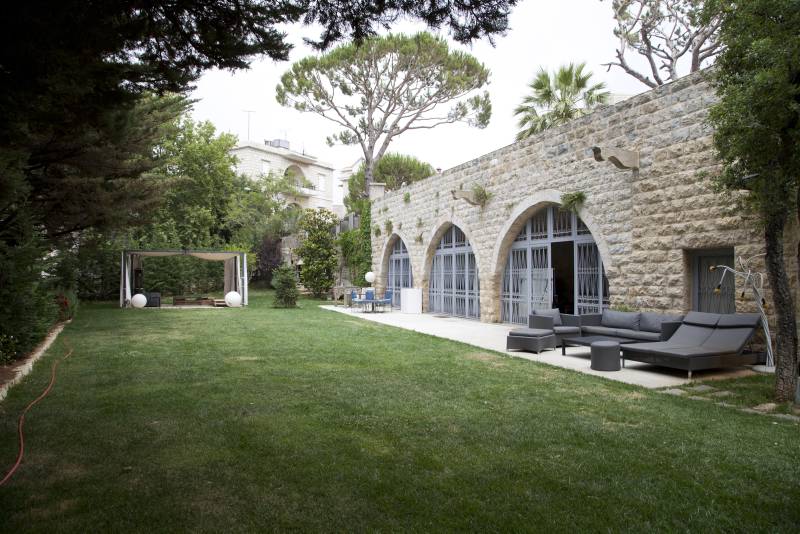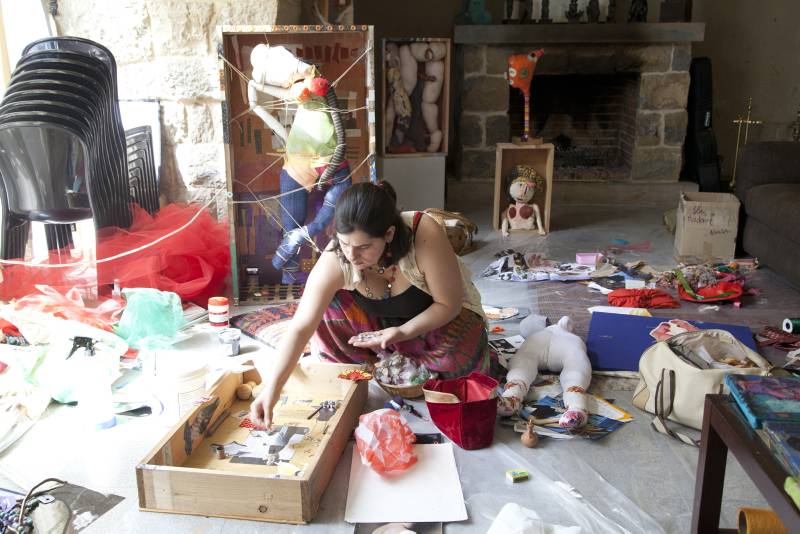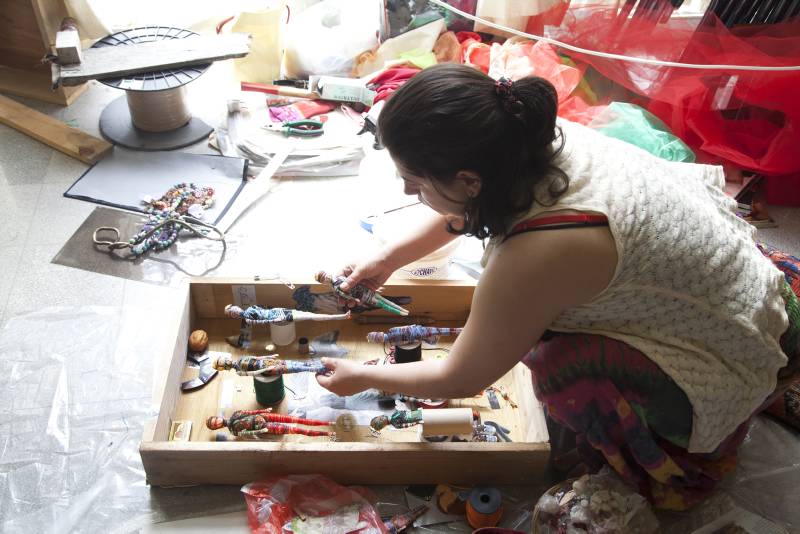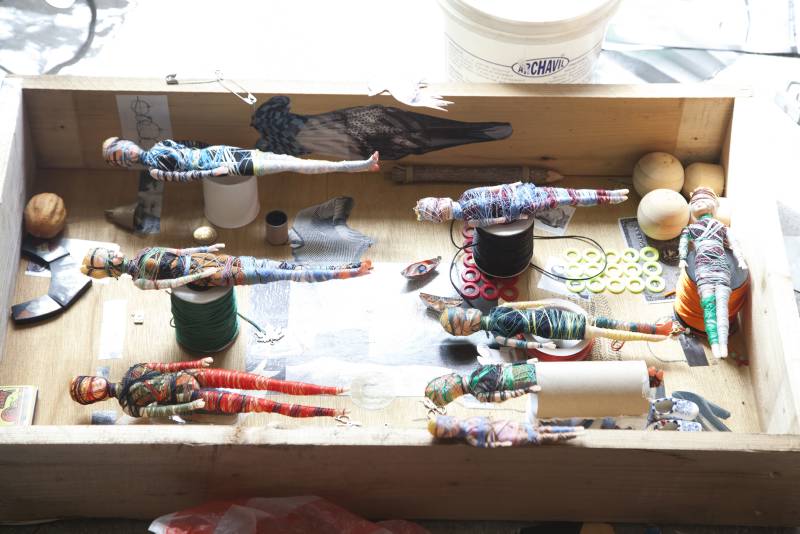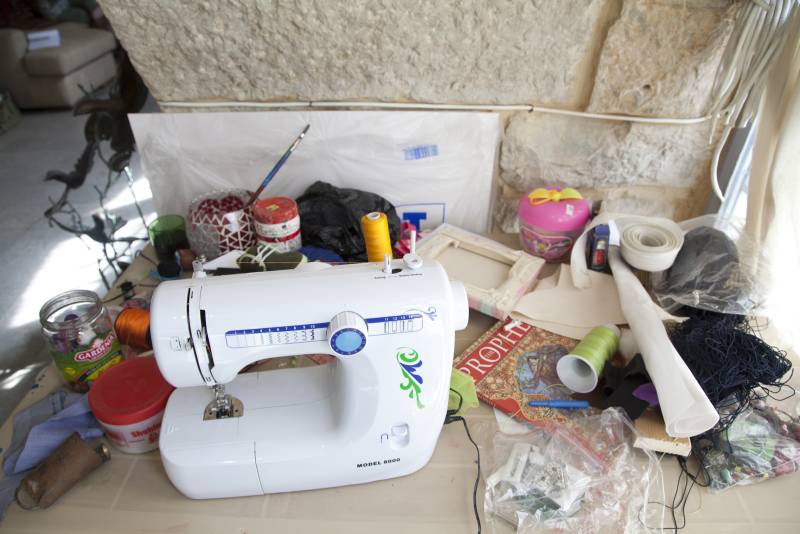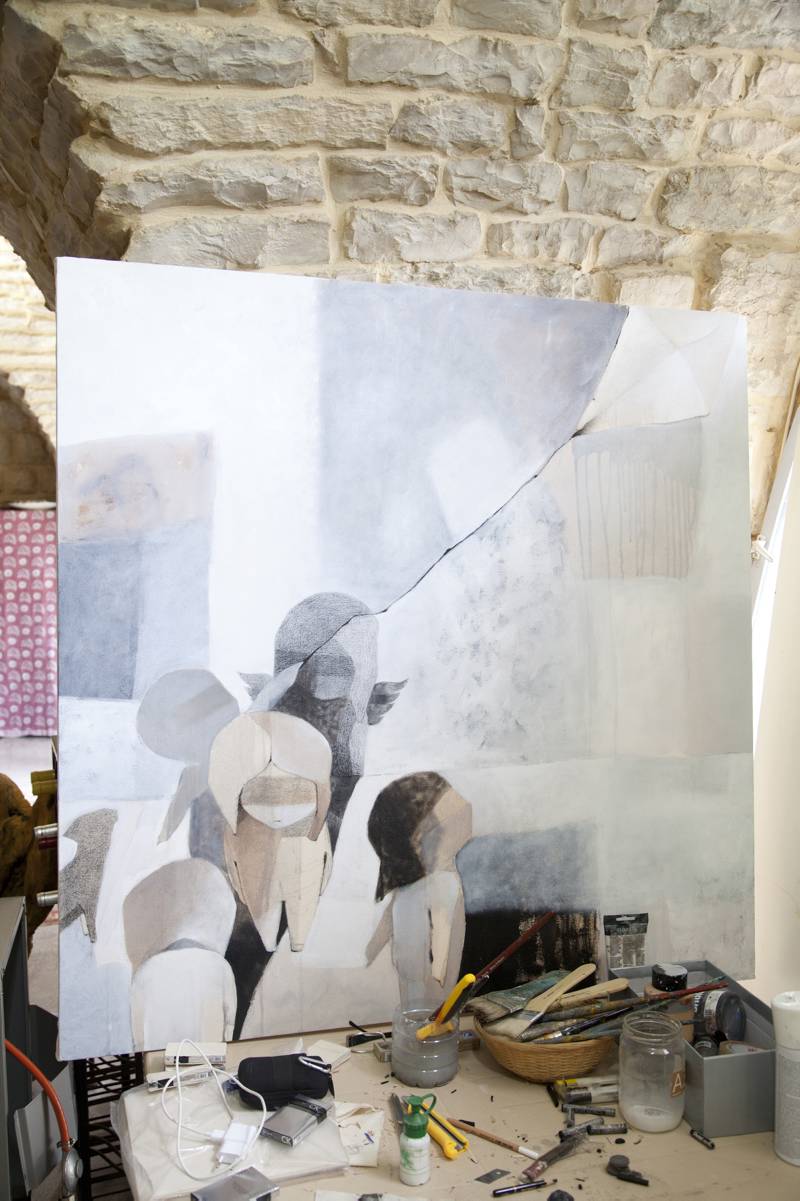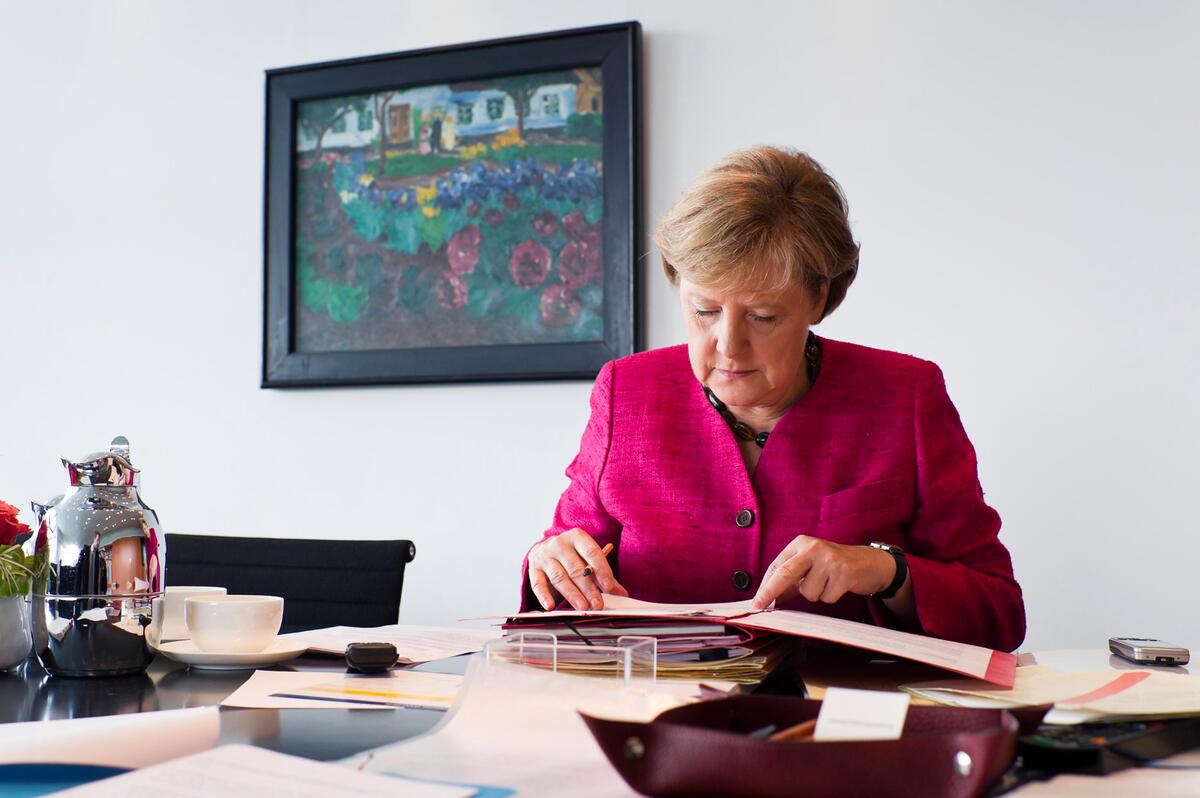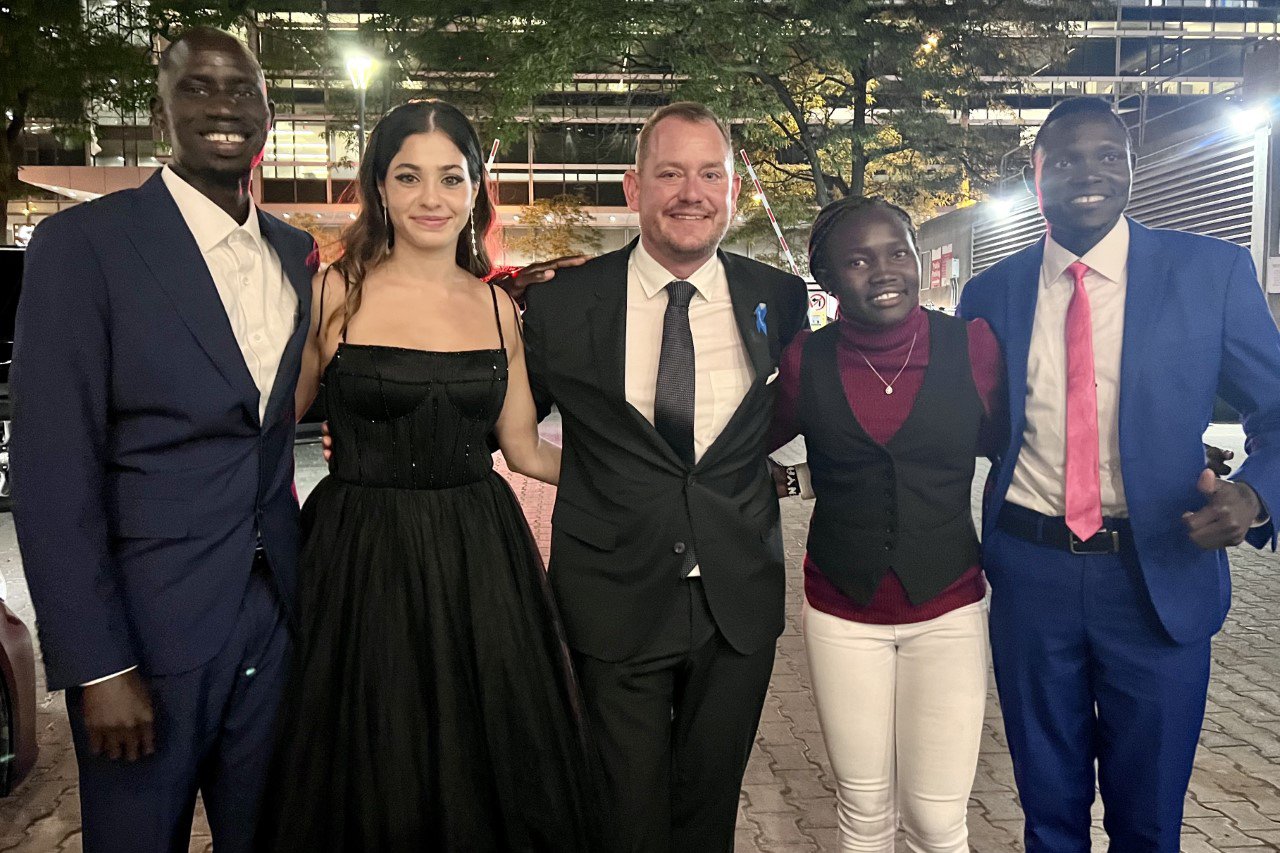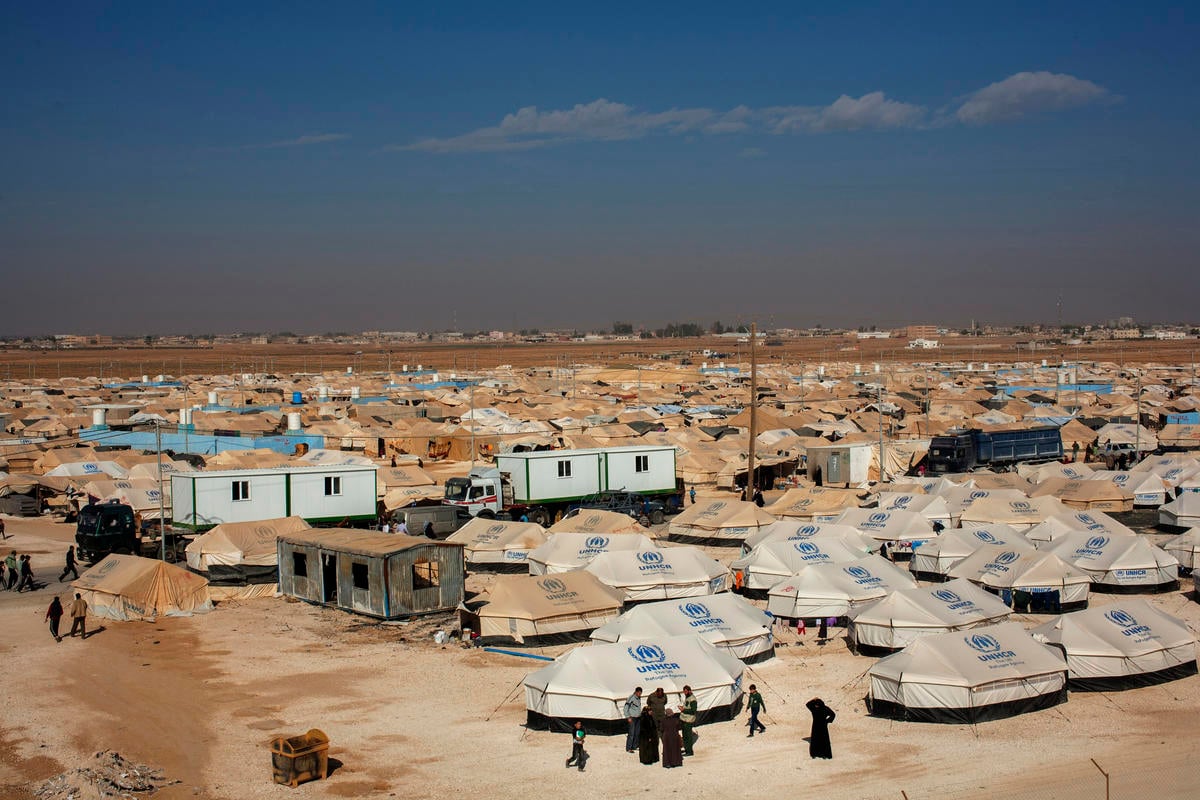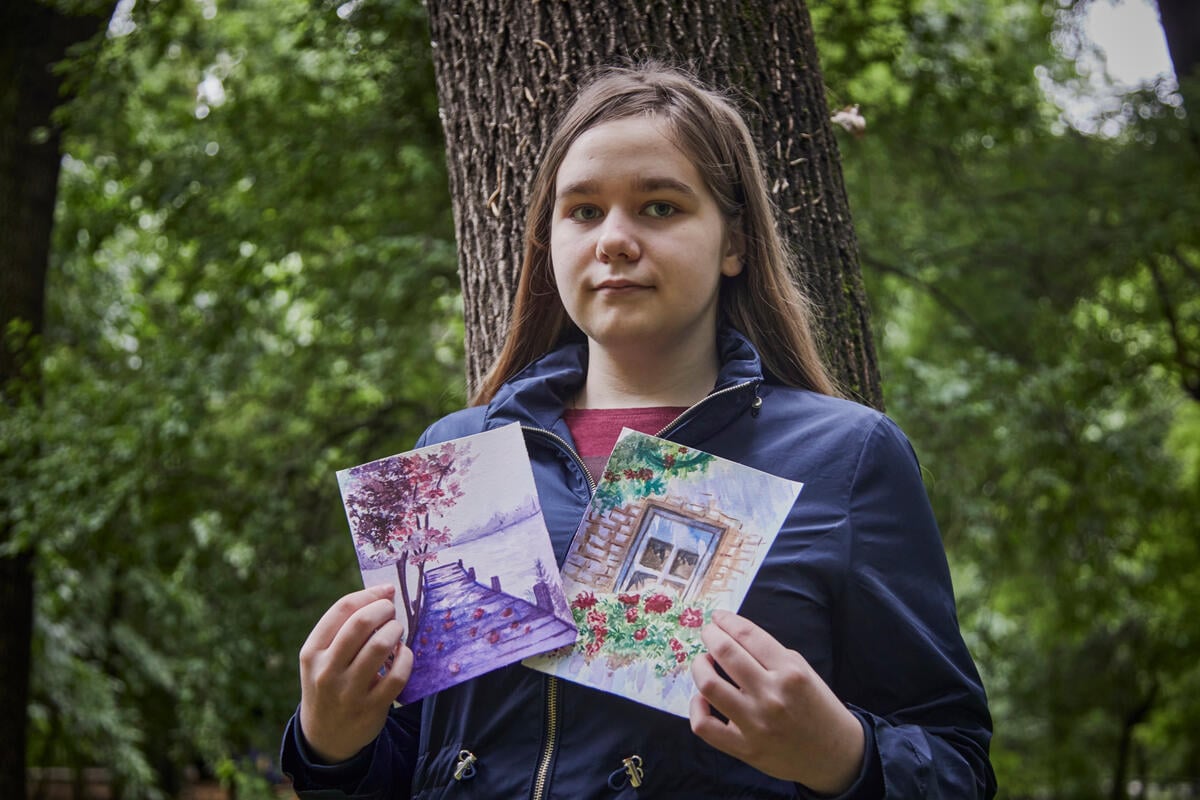Syrian visionary turns crumbling coach house into an artist's atelier
Syrian visionary turns crumbling coach house into an artist's atelier
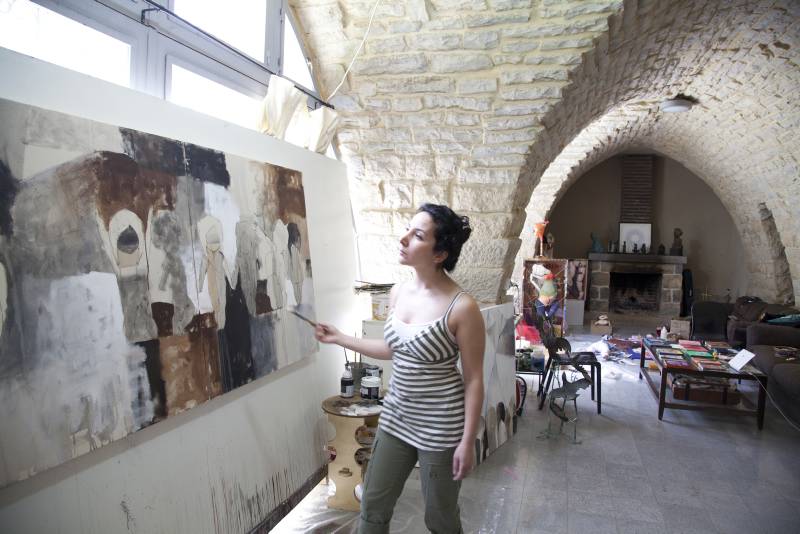
ALEY, Lebanon, July 11 (UNHCR) - When Raghad Mardini first set eyes on the crumbling, war-scarred Ottoman coach house in the mountains above Beirut she saw potential. Trained as a civil engineer in her native Syria, she knew how to put the bones back together and spent a year lovingly restoring the structure, which had been badly damaged during Lebanon's 1975-90 civil war.
She also knew the potential of the rudderless young Syrian artists recently displaced by the tragic war in their country, who needed her help in navigating Beirut, where they had all fled. With the coach house finished and standing empty, Raghad decided to marry the two.
With its high vaulted ceilings, light, space and peaceful location in the town of Aley, she knew the beautiful old building would make a perfect atelier (studio) and sanctuary for artists in need - she set up the Art Residence Aley, or ARA.
Raghad had come to work in Lebanon in 2008, so she was in the country when the exodus from Syria began in March 2011. The arrivals included growing numbers of young artists fleeing the increasingly brutal war across the border.
Their schools and universities were bombed, their homes and studios were looted or torched, the means by which they made work and earned money came to a halt. Many of the artists Raghad came to know were not able to produce or create for a long time as they were living in small, cramped quarters, and had both physical and psychological hurdles to surmount.
The ARA started off with just one artist. "I wanted this to be a Syrian atelier - in a different geographical place - but with a Syrian atmosphere and ambiance," the dynamic founder explained. "I started to receive new artists every month."
Raghad said most hadn't worked in more than a year and they were full of ideas and energy. "Logistically, emotionally, psychologically there were barriers for them. So I offered accommodation and materials and pocket money. I gave them a protected environment where they felt free and safe to work. I told them to just express what they've seen and lived in any way they choose."
Reem Yassouf and Hiba Alakkad are two of the 24 artists who have spent a month at the ARA. Reem is a painter whose former work was saturated in colour, but who now only paints in monochromatic white, gray and black. She paints the children of Syria whose future, she believes, lacks colour, lacks hope. Often the eyes of the children in her depictions are closed, as if sleeping or dead.
Hiba has always worked with fabric, thread and paper -- but on canvas. She was raised in a family of tailors and from the age of 12 made abstract constructs using the materials at hand. When she and her husband and child had to flee Syria, she was unable to produce work for more than a year. She was creatively blocked, traumatized by the violence and destruction she'd seen in her country.
The residency at Aley gave her an unencumbered opportunity to express herself and her work took a radical turn. She began to make three-dimensional pieces that reflected her experience of the war. One of the most arresting is a figure -maybe a child - bound by thread, inside what looks like a coffin.
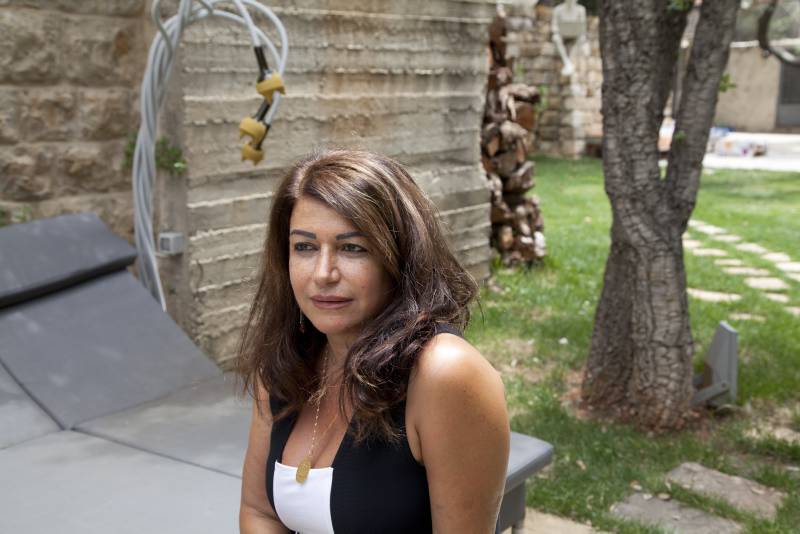
Other works are in process: soft sculptures of abstract faces and heads, and dolls bound together with thread, hovering over news clippings and images of the war in Syria.
Raghad says that most, if not all, of the artists who have spent time in Aley have made significant creative leaps. One artist began painting for the first time in his life; one departed from painting to explore outdoor installations; one made paintings of the dead, reflecting his recent experience. All, she believes, are working through the effects of war and displacement.
In exchange for their time in the residency, the artists leave one work for the public collection, and a few words about their experiences in a guestbook. "These were the nicest months. Thanks for trusting us," wrote one artist; "In this time I never felt away from home," another signed.
Raghad said the retreat at Aley had a special ambience. "Within the walls of the residency, we don't feel nostalgic. It's as if we're in Syria. This is a place where we communicate, exchange ideas, make friendships and build bridges. It's open to all possibilities for the artists".
By Elena Dorfman in Aley, Lebanon


